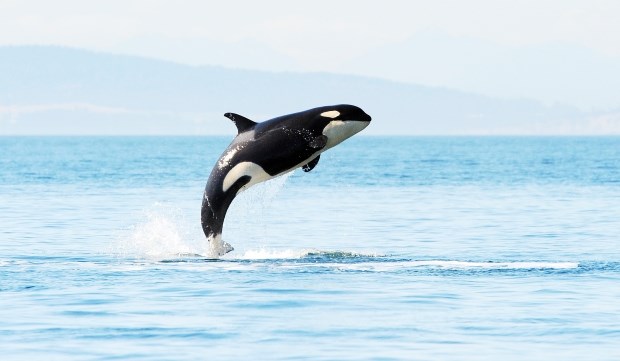Scientists and whale-protection groups are sending a resounding message to the province that it is unacceptable to consider energy-generating tidal turbines in critical habitat for threatened northern resident killer whales.
The outcry may change plans by SRM Projects Ltd. of Nanaimo to investigate putting tidal turbines in Blackney Passage near the entrance to Johnstone Strait, proponent Scot Merriam said Tuesday.
"I am going to be trying to talk to as many of these people as I can, one on one, to understand the primary concerns," said Merriam, who was taken aback by the response.
"It may be that this area is not suitable for this project. ... If we are faced with this sort of concern, it is certainly not the place where we would be looking at installing our first project."
Paul Spong, director of the OrcaLab, a Hanson Island whale research station, said he was shocked to discover the Integrated Land Management Bureau was looking for comments on SRM's application. The deadline for online comments is today and written comments must be in by Dec. 2.
"It is outrageous that this idea is even being considered in vital orca critical habitat," Spong said. "The population is officially threatened and critical habitat is designated to help them. To me, it's preposterous to put something there that would further endanger a threatened population."
At issue is not just the possibility of slow-moving turbines in the narrow passage used by whales to travel through to Johnstone Strait, but the investigative stage, Spong said.
"One of the devices which might be used is like sonar with high-frequency noise," he said.
There are about 265 northern resident killer whales, and the federal government is legally bound to protect their critical habitat, following a court case brought by a coalition of environmental groups.
OrcaLab researcher Helena Symonds said the narrow passage is used as a thoroughfare by killer whales - and increasingly, by humpbacks - and is also where orcas prey on chum salmon caught in the strong currents.
"It's an incredibly rich area and vital to the orcas," she said.
Alternative-energy projects should be supported, but this is the wrong place for it, Symonds said.
The call for comments has drawn international attention - the British-based Whale and Dolphin Conservation Society has put out an alert to members. "This would put any whale or dolphin that were to swim into one of these devices at risk of death," it says.
Merriam said turbines would be years down the road and monitoring equipment, looking at depths, tides and currents, should not be harmful to whales or other marine life.
"If they were harmful they would not be used," he said.
If the investigation gets the provincial go-ahead and the company decides to proceed, it would take four or five years and the project would probably not be up and running for another four or five years, Merriam said.
During that time, tidal-turbine technology will also evolve, he said.
"Our intentions are good and we want to see B.C. continue to be a leader in clean energy," Merriam said.
Brennan Clarke, Forests and Lands Ministry spokesman, said if the company wanted to put turbines in the water, it would have to submit another application that would trigger a separate public process.
At that stage, the company would have to submit a detailed management plan outlining steps to minimize the impact on wildlife, Clarke said.
jlavoie@timescolonist.com



